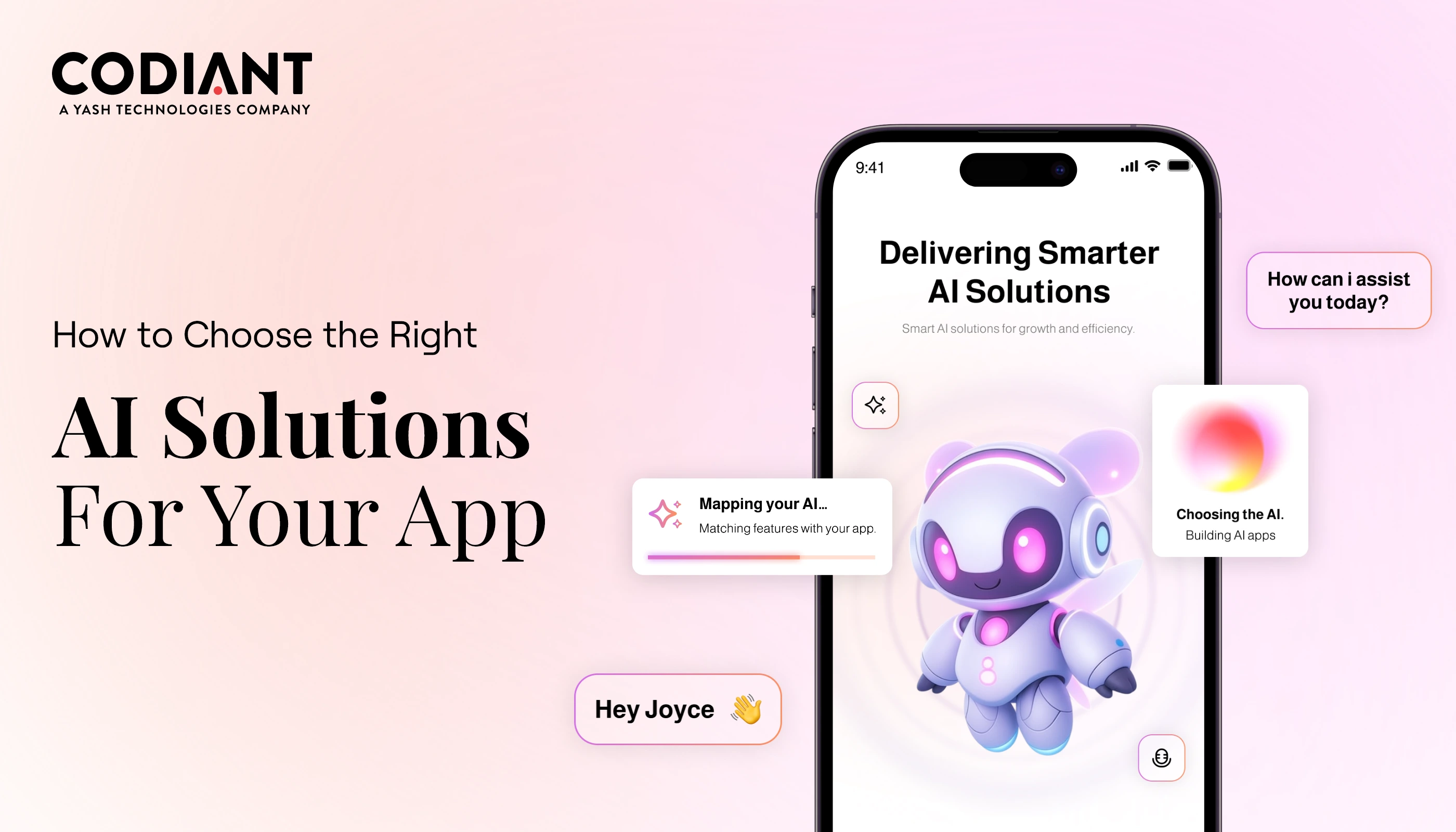The Best Cross-Platform App Development Frameworks
Table of Contents
Subscribe To Our Newsletter

Cross-platform application development has been in demand for the past decade. Whether small, medium-sized, or big businesses, they want to provide their users with an appealing UI/UX design. They aim to reach target audiences through different mobile devices and platforms.
But, how can these businesses work to reach their goal using mobile devices and platforms? Is there any mobile app development method available that can benefit them? What do you think?
Here, a cross-platform app development approach comes into play! It can help businesses match their unique needs and overcome business pitfalls, if any. This app development approach streamlines the entire process of developing mobile apps and accessing the apps on multiple platforms.
Using cross-platform app development, businesses can have their presence on mobiles. They can use a technically advanced mobile app development framework that works for all Android, iOS, and Windows platforms.
The latest report shows that there are more than 5.25 Billion smartphone users in 2023, which marks around a 4.9% annual increase on average.
At such a high rate of people using mobile devices, businesses will get the opportunity to reach a greater number of audiences by developing cross-platform apps.
However, there are certain challenges in the process of cross-platform app development. These challenges include:
- Limited access to device hardware features. This is because tools don’t have access to devices’ hardware.
- Performance issues due to improper communication between native and non-native components.
- Hard to maintain cross-compliance with the app due to the app running on multiple devices and OS.
- Performance issues lead to bad UX.
- You can’t keep the app up with updates to both devices and operating systems.
To work on these challenges of cross-platform app development, several cross-platform app development frameworks have been introduced in the market.
These cross-platform app development frameworks help in building mobile apps cost-effectively and timely.
What Is a Cross-Platform Mobile App Development Framework?
A cross platform mobile app development framework is a reliable platform that helps mobile app developers develop mobile applications that seamlessly work on multiple operating systems and devices using a single codebase. These include web browsers, Android, or iOS.
Later, the best desktop organizer “cross-platform” frameworks provide a way to ease the app development process with the ability to write once and deploy on various platforms. So, these frameworks help developers in app development; now developers don’t need to write separate code for each platform. This will save the developers’ efforts and time required to develop an app.
These best cross-platform app development frameworks use a common programming language such as Dart, C#, JavaScript, or HTML/CSS. This programming language is easy to execute on multiple platforms. And, it serves as the base of developing app logic and attractive user interface.
Therefore, you should have a good hand in using JavaScript and HTML/CSS before you start working on mobile development frameworks.
Here, we have mentioned the list of the best 10 cross-platform app development frameworks that help in building functional mobile applications.

Related Reading: Top 10 Back-End Frameworks for Web Development in 2022
Best Cross-Platform App Development Frameworks
1. React Native
Built by Facebook, React Native is a prevalent open-source framework.
This cross-platform app development framework uses React and JavaScript to build high-performance native mobile apps.
Features Highlight:
- Accessible to web developers due to the use of JavaScript and React.
- Strong community support and constant updates.
- A wide array of libraries and pre-built components.
- Supports hot-reloading that helps perform real-time code changes and immediate result viewing.
Why to Use:
- Native-like performance with a single codebase.
- Cost-effective development and maintenance.
- Allows developers to leverage existing web development skills.
- Suitable for both iOS and Android platforms.
- Adopted by leading companies such as Airbnb, Facebook, and Instagram.
Where to Use:
- Mobile applications require a native look and feel.
- Apps that require frequent updates and iterations.
- Prototyping and MVP development.
2. Flutter
Engineered by Google, Flutter works on the Dart programming language.
This mobile app development framework provides a highly customizable widget-based architecture to ensure great UI across multiple platforms, making it ideal for Flutter development.
Also Read: Google Flutter 3 Features
Features Highlight:
- Uses the Dart programming language.
- Rich set of pre-designed widgets for building user interfaces.
- A hot-reload feature for rapid development.
- Supports customizable and widget-based architecture.
Why to Use:
- High-performance apps with a single codebase.
- Quick development and testing.
- Excellent documentation and community support.
- Supports Android, iOS, Android, desktop, and web browsers.
- Highly customizable, allowing for a unique look and feel.
Where to Use:
- Apps with complex custom designs.
- Cross-platform applications that prioritize performance.
- Multi-platform development, including web and desktop.
3. Ionic
Developed on web technologies, Ionic helps in rapid app development. It uses a vast library of pre-designed UI components to build functional apps.
This is one of the cross-platform app development frameworks that is perfect for creating mobile and progressive web apps.
Features Highlight:
- Built on web technologies like HTML, CSS, and JavaScript.
- Employs Angular for building the user interface.
- Offers a library of pre-designed UI components.
- Integrates easily with Cordova for native access.
- Allows for responsive design across different devices.
Why to Use:
- Quick development using web technologies.
- Access to a library of pre-designed UI components.
- Seamless integration with Cordova plugins.
- Ideal for building progressive web apps (PWAs).
- Cost-effective development.
Where to Use:
- Cross-platform apps with a focus on web technologies.
- Apps require a consistent look and feel across platforms.
- PWAs and mobile apps for smaller businesses.
4. Xamarin
Another cross-platform app development tool is Xamarin. Using Xamarin, the app developers use 90% of the code for app development in Android, iOS, and Windows platforms.
Further, it helps in making native user interfaces, sharing code across various platforms, and accessing platform-specific application programming interfaces.
Features Highlight:
- Developed by Microsoft.
- Uses C# and .NET for development.
- Provides a shared codebase for business logic.
- Gives access to native APIs through a unified API layer.
- Includes a wide range of libraries and tools.
Why to Use:
- True native performance and user experience.
- Direct integration with Visual Studio.
- Code sharing between iOS and Android.
- Access to platform-specific features.
- Suitable for enterprise and data-intensive applications.
Where to Use:
- Enterprise-level applications.
- Apps requiring access to native features and APIs.
- Cross-platform development within the Microsoft ecosystem.
5. Vue Native
Combining Vue.js with React Native, Vue Native offers a flexible and familiar framework to create cross-platform apps with native-like performance.
Features Highlight:
- Leverages Vue’s component-based architecture.
- Provides a Vue Router and Vuex for state management.
- Supports hot-reloading for faster development.
Why to Use:
- Familiarity for developers already skilled in Vue.js.
- Component-based development for code reusability.
- Integration with Vue’s ecosystem of libraries and tools.
- Native-like performance with a single codebase.
- Suitable for smaller to medium-sized projects.
Where to Use:
- Apps requiring a Vue.js frontend and native features.
- Prototyping and MVP development.
- Projects where Vue.js expertise is available.
6. NativeScript:
Leveraging JavaScript or TypeScript, NativeScript ensures true native performance and access to device features.
Also, it supports integration with Angular and Vue.js for UI development.
Features Highlight:
- Offers a wide range of pre-built UI components.
- Provides access to native APIs through a unified layer.
- Supports Angular and Vue.js for building UIs.
- Allows for direct code access to native elements.
Why to Use:
- True native performance and user experience.
- Access to a large library of UI components.
- Integration with Vue.js and AngularJS frameworks.
- Code sharing between iOS and Android.
- Suitable for apps requiring high performance and native look and feel.
Where to Use:
- Cross-platform apps that prioritize native performance.
- Apps requiring access to platform-specific features.
- Development with Angular or Vue.js expertise.
7. Apache Cordova/ PhoneGap:
Apache Cordova is an open-source mobile app development framework. This framework helps in developing apps with native device features.
Furthermore, it helps app developers to work on a single codebase using HTML, CSS, and JavaScript web technologies.
Features Highlight:
- Utilizes HTML5, CSS3, and JavaScript.
- Accesses native device features through plugins.
- Provides a cloud-based build service.
- Supports various platforms, including iOS, Android, Windows, and more.
Why to Use:
- Well-suited for web developers familiar with HTML and JavaScript.
- Extensive plugin library for accessing device features.
- Cross-platform app development with minimal effort.
- Quick prototyping and development.
Where to Use:
- Simple mobile applications.
- Prototypes and proof-of-concept projects.
- Apps requiring web technologies and minimal device interaction.
8. Adobe PhoneGap Build:
Part of Adobe Creative Cloud, PhoneGap Build simplifies app building with cloud-based packaging and automatic signing.
This cross-platform mobile app development tool caters to the needs of app designing and development teams with limited coding expertise.
Features Highlight:
- Simplifies the build and compilation process for PhoneGap apps.
- Supports automatic signing of apps for iOS and Android.
- Offers a simple web interface for building apps.
Why to Use:
- Modernizes app creation process.
- Requires minimal configuration and setup.
- Easy integration with Adobe’s design tools.
- Suitable for teams with minimal development expertise.
- Cloud-based infrastructure for convenience.
Where to Use:
- Projects requiring a simplified app development process.
- Apps created by designers without extensive coding knowledge.
- Small to medium-sized businesses with limited development resources.
8. Appgyver (Supersonic):
Appgyver is one of the most suitable cross-platform app development frameworks, which comes with a visual development environment and a backend-as-a-service (BaaS) platform.
It is a good choice for rapid prototyping and MVP development.
Features Highlight:
- Uses HTML5, CSS, and JavaScript.
- Offers a visual development environment.
- Supports a wide range of plugins and integrations.
- Allows for real-time previews on mobile devices.
- Provides a backend-as-a-service (BaaS) platform for data storage.
Why to Use:
- Visual development for rapid prototyping.
- Extensive plugin library for added functionality.
- Real-time previews on mobile devices for testing.
- Backend services integration for data management.
- Suitable for building MVPs and prototypes.
Where to Use:
- Rapid prototyping and MVP development.
- Apps requiring a visual development environment.
- Projects needing backend services integration.
10. Kivy:
As an open-source Python cross-platform app development framework, Kivy helps build cross-platform apps across various operating systems and input methods.
This makes Kivy a great choice for educational and custom UI-driven applications.
Features Highlight:
- Cross-platform support for Windows, macOS, Linux, Android, and iOS.
- Utilizes a natural user interface (NUI) and multitouch support.
- Offers a customizable and flexible UI toolkit.
- Supports various input methods, including touch, mouse, and more.
Why to Use:
- Python programming for code simplicity and readability.
- Cross-platform compatibility across multiple OSes.
- Support for multitouch and NUI elements.
- Ideal for applications requiring custom UI designs.
- Suitable for educational and experimental projects.
Where to Use:
- Educational apps and games.
- Custom UI designs and interactive applications.
- Projects where Python expertise is available.
To Sum Up!
Among all these cross-platform app development frameworks, you should choose the cross-platform app development framework that aligns with your app functional requirements and related project scope.
However, approaching a leading cross-platform mobile app development company can help you make the right decision.
Codiant is a leading provider of mobile app development services in Saudi Arabia, helping businesses build powerful, user-friendly, and scalable mobile solutions. With years of proven expertise in cross-platform app development, we create apps that run seamlessly across Android, iOS, and the web. Our experienced team of developers combines innovation, strategy, and technology to deliver tailor-made digital products that enhance customer engagement and drive business growth. Whether you’re a startup or an enterprise, we ensure your mobile app stands out with performance-driven design, robust functionality, and a smooth user experience.
Featured Blogs
Read our thoughts and insights on the latest tech and business trends
How to Choose the Right AI Solutions for Your Existing App
- December 1, 2025
- Artificial Intelligence
Businesses today are under pressure to move faster, deliver personalized experiences, and operate with greater accuracy. This is why many enterprises and startups are now looking for ways to add AI features to their mobile... Read more
How to Enable AI for Smart Diet Planning and Client Progress Tracking
- November 26, 2025
- Artificial Intelligence
Smart diet planning and consistent progress tracking have become essential in a world where people want faster, more accurate ways to manage their health. Traditional methods like manual calorie counting or generic meal charts often... Read more
How to Digitize Your Home-Service Business with an AI-Powered Platform
- November 21, 2025
- Home Services
The home-service industry - covering HVAC, plumbing, electrical, and cleaning—has long relied on manual scheduling, phone-based bookings, and paper invoices. But as customer expectations shift toward instant communication and transparency, these traditional processes are no... Read more




